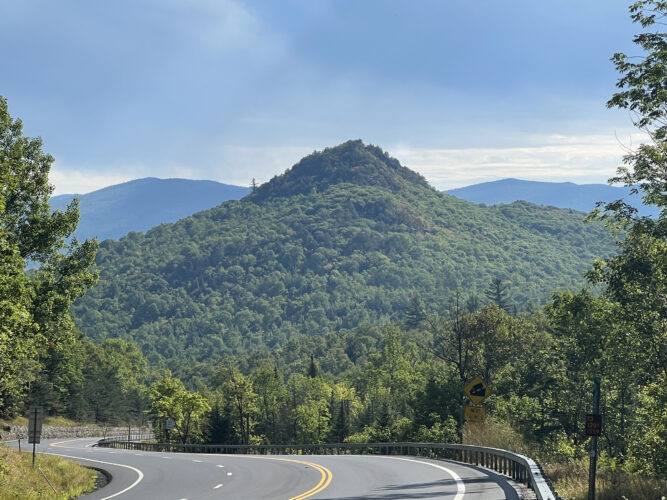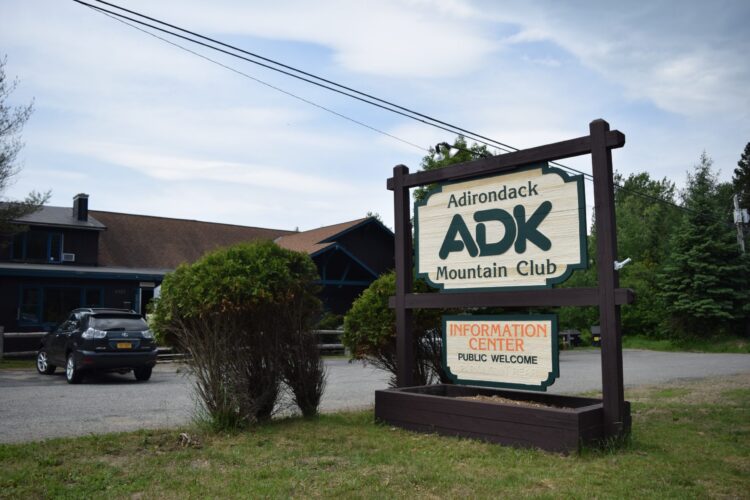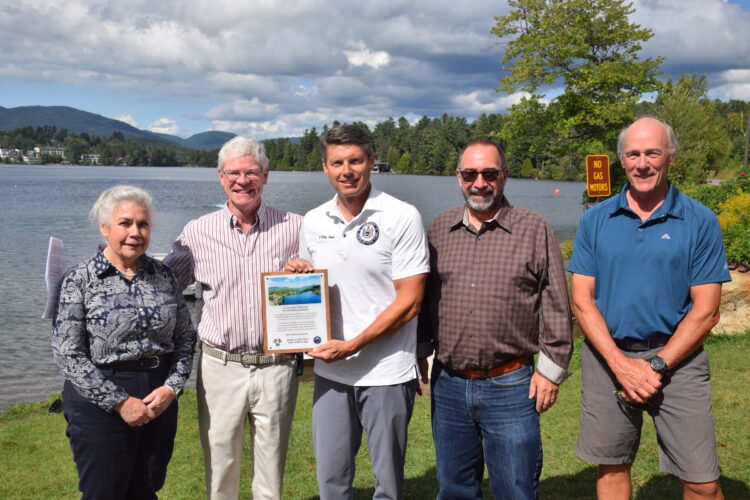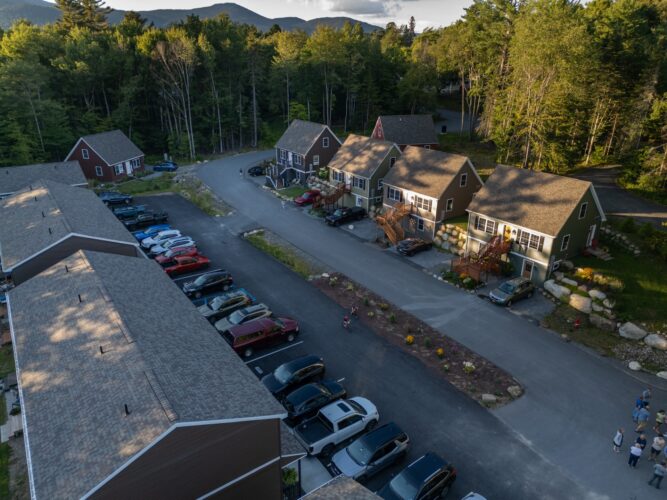Canadian connection
Canadian athletes continue to train in Lake Placid
- Daniel Bradley, one of the younger athletes working to earn a spot on the Canadian national sliding team, pauses for a break during a session at the start track at Mount Van Hoevenberg on Thursday, July 3. (News photo — Grace McIntyre)
- Canadian bobsledder Daniel Bradley practices jumping into the practice sled during a training session at the start track at Mount Van Hoevenberg on Thursday, July 3. (News photo — Grace McIntyre)
- Canadian bobsledder Daniel Bradley pauses for a break during a session at the start track at Mount Van Hoevenberg on Thursday, July 3. (News photo — Grace McIntyre)

Daniel Bradley, one of the younger athletes working to earn a spot on the Canadian national sliding team, pauses for a break during a session at the start track at Mount Van Hoevenberg on Thursday, July 3. (News photo — Grace McIntyre)
LAKE PLACID — As local efforts to help Canadian visitors feel welcome continue, Olympic hopefuls like Daniel Bradley continue to call Lake Placid their training home.
Bradley, a 22-year-old athlete from Vancouver, British Columbia, just started bobsledding in late 2023. He’s been an athlete his whole life, having started skating when he was 3 years old. He played AAA hockey, the elite level of youth hockey in Canada and was a provincial speedskating champion.
It is common for bobsledders to make the jump from other sports, especially ones that emphasize the power and speed that translate to pushing a sled.
“I’m really glad that bobsled was able to give me a second shot at a pro career in athletics,” he said. “It’s not like you grow up bobsledding.”
Last year, Bradley went to the RBC Training Ground, which is the primary recruitment method for the Canadian national team. In prior years, he had been selected by Speed Skating Canada, which was what led to his provincial championships. This time, he was scouted by Ryan Sommer from Bobsleigh Canada Skeleton. After that, he came to Lake Placid for his first push camp. He’s been hooked since then.
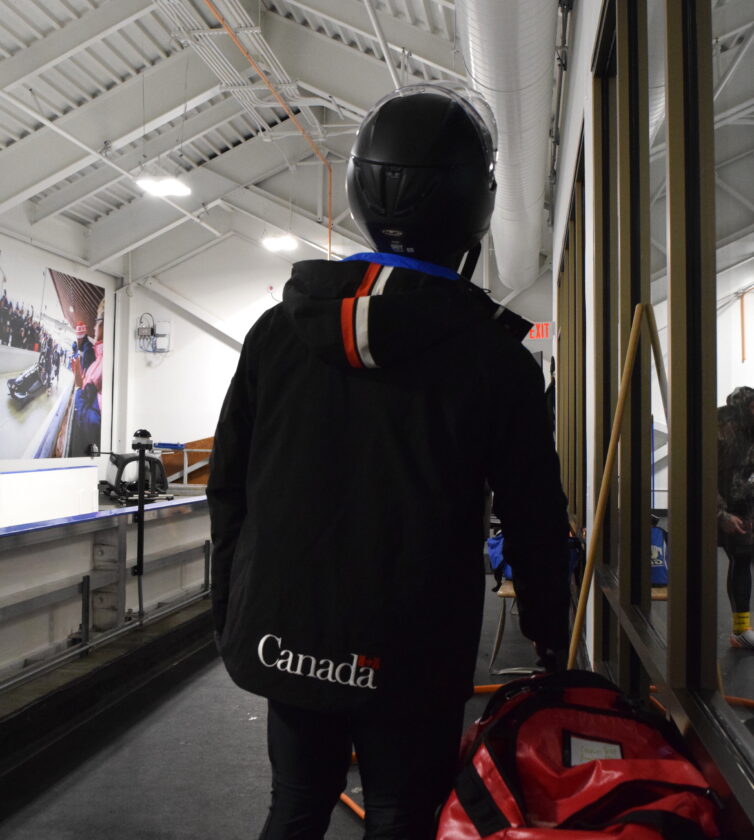
Canadian bobsledder Daniel Bradley pauses for a break during a session at the start track at Mount Van Hoevenberg on Thursday, July 3. (News photo — Grace McIntyre)
“It’s fun. It’s like a roller coaster,” he said. “If you’re not having fun sliding, I don’t know what you’re doing.”
Since then, Bradley has been to the Whistler Sliding Centre in British Columbia to push with the Canadian team. He’s hoping to earn a roster spot on the team this year, just in time for the Milano Cortina 2026 Olympic Winter Games.
“You never know what’s going to happen,” he said. “(With) bobsled, there’s a lot of luck that’s involved with it, so just a couple of good runs could be the difference between you and an Olympic squad.”
This second shot at a professional athletic career comes after the coronavirus pandemic derailed his short-track speedskating. Now, he’s training along athletes who are mostly older than him. So far, the adjustment to a new sport has gone relatively smoothly. It’s a difficult, but exciting, new pursuit.
“Bobsled is the craziest sport I’ve ever done,” Bradley said. “It’s way crazier than hockey … and hockey is very physical.”
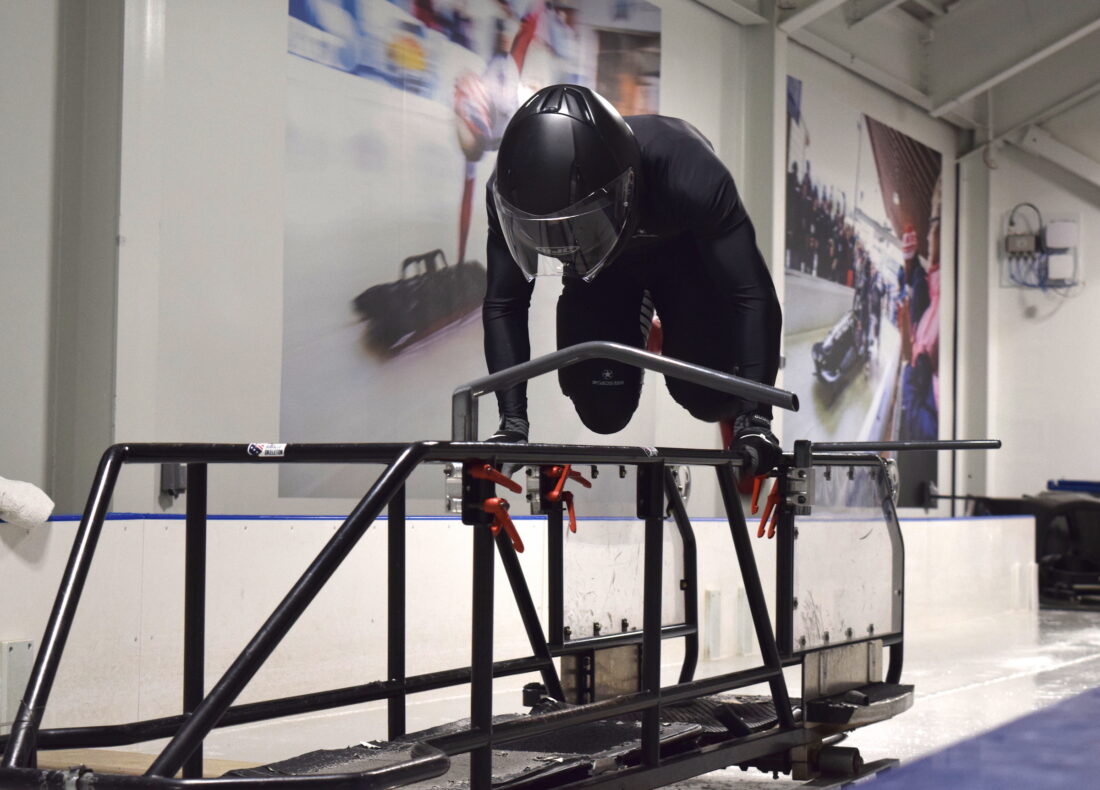
Canadian bobsledder Daniel Bradley practices jumping into the practice sled during a training session at the start track at Mount Van Hoevenberg on Thursday, July 3. (News photo — Grace McIntyre)
The four-person bobsled has four different positions, the pilot, two side pushers and a brakeman. The last position is Bradley’s favorite so far. Because this position is the last person to jump in the sled, they also end up helping the most with pushing. However, Bradley is training all of the skills right now, since it’s ultimately the decision of the driver (with the coach’s blessing) to assign spots.
Bradley has been trying to come to Lake Placid every few weeks during the off-season to train on the indoor push track in the Ice House, located inside Mount Van Hoevenberg’s Mountain Pass Lodge. He alternates between different pushing positions, running and jumping into the sled. Off the ice, he does a lot of “pushing” lifts — like bench presses, squats and deadlifts. He also runs with his younger brother, who is a talented track athlete.
Jennifer Mott, the state Olympic Regional Development Authority’s coordinator of athletes, schedules and accreditation, estimates that Bradley is one of about 20 Canadian athletes who come to train in Lake Placid throughout the season. BCS also has camps on the push track throughout the year, each with 10 to 15 athletes.
Part of why the Canadian team comes to Lake Placid so often is because there aren’t many ice houses with push tracks for the team to train on, Bradley said. Whistler has a run but no ice house. There’s a push track in Calgary, but for athletes from Toronto, Ottawa and Montreal, Lake Placid is much closer.
–
Welcoming Canadians
–
In light of the importance of both Canadian athletes and visitors to Lake Placid, ORDA has joined other businesses in the area in specific campaigns to welcome these visitors. On Canada Day, Tuesday, July 1, this included lighting up the Olympic Center in red and white, the colors of the Canadian flag.
The Regional Office of Sustainable Tourism has been encouraging businesses to fly Canadian flags and has been trying, for its part, to spread a message of welcome to Canadian media.
“The Adirondack region is sincere in its hope that our friends in Canada will visit this summer and fall,” said ROOST Communications Manager Jane Hooper. “Having said that, we understand the reasons for their decision. Please know that the Adirondack region of upstate New York is ready to welcome our Canadian friends, whenever they are ready.”
Bradley said he has never felt less than welcome in Lake Placid — in fact, he sees it as a place he might like to live someday.
“I feel that this is a conflict between you politicians, not athletes,” he said, adding that Canadians have been sliding alongside athletes from Thailand, America, Australia and Israel.
“We don’t really have politics in sport,” he said. “Canada is the most welcoming nation. We welcome everyone.”
The smaller communities of winter Olympic sports are interrelated, from training spaces to equipment. A lot of the equipment used by Canadian bobsledders come from the United States, Bradley pointed out. As he looks toward the next Olympics and the training needed to get there, he hopes that the friendly atmosphere stays that way. The athletes try to do their part, even with small gestures like sweeping the track after finishing their starts.
“We just hope we all get along, that everything stays positive,” he said.

